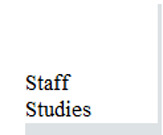
Staff Studies
 |
175 The Future of Retail Electronic Payments Systems: Industry Interviews and Analysis Federal Reserve Board Staff for the Payments System Development Committee December 2002 |
Summary: Electronic payments have become a prominent feature of the U.S. economic landscape, as consumers, businesses, and governments have increasingly used electronic instruments to make retail payments. Survey research by the Federal Reserve published in 2002, for example, indicates that the use of debit and credit cards and automatic deposit and withdrawal (via the automated clearinghouse) grew fivefold from 1979 to 2000 and that the use of paper checks for payments probably peaked in the mid-1990s. Over the past decade especially, developers have experimented with new ways of making electronic payments. As with many innovations, only a small number of these new methods of payment have enjoyed commercial success. Nevertheless, developers' inclination to expand the range of options and techniques for making electronic payments has been consistent with the long-term direction of payments activity in the United States.
The Federal Reserve's Payments System Development Committee is concerned about regulatory and operational barriers to innovation that may inhibit the long-term development of the payments system. Accordingly, the committee asked Federal Reserve staff to seek the views of the private sector and other interested parties on developments in payments, clearing, and settlement services, focusing on potential barriers to further innovation and the implications of new technologies for the design and function of payments systems. The staff study "The Future of Retail Electronic Payments Systems: Industry Interviews and Analysis" presents highlights of interviews with representatives of forty-nine organizations and discusses areas in which, in the committee's opinion, the Federal Reserve and other organizations may be able to foster, or help reduce barriers to, innovation in the payments system. The study also provides a more detailed account of the discussions with industry representatives and the recommendations they made. The study presents nine key issues--including settlement timing and standards--and accompanying recommendations. No single issue was consistently identified, no single recommendation was made by a significant number of interviewees, and, with a few exceptions, no fundamental problems with or barriers to innovation in existing clearing and settlement arrangements were noted. These results should not, however, be interpreted as satisfaction with the status quo. Rather, they point to the complexity and difficulty of innovation. The results also highlight the need to identify and address barriers to innovation, where appropriate, and to monitor closely clearing and settlement arrangements to ensure that they evolve in ways that support safe and efficient payments today and in the future. Full paper (314 KB PDF) | Screen reader version
Home | Economic research and data | Staff Studies
Accessibility | Contact Us
Last update: March 17, 2006